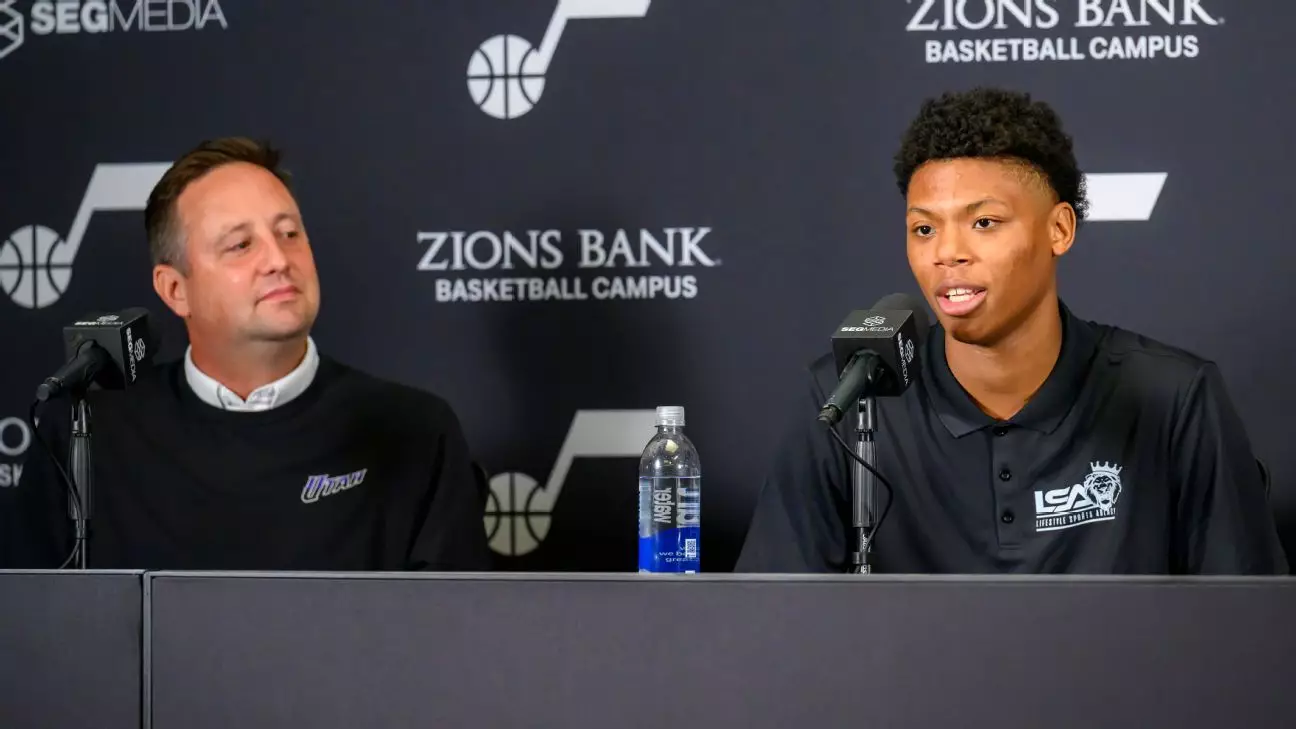Ace Bailey’s path to the Utah Jazz as the fifth overall pick in the NBA draft was anything but straightforward. Far from the typical eager lottery prospect, Bailey’s predraft behavior raised eyebrows and criticism across the league. By declining workout invites from multiple teams—including the Jazz themselves—Bailey effectively positioned himself as a player who wielded his own agenda in the draft process. This kind of confidence, or perhaps defiance, alienates some teams and shakes up the typical player-team courting ritual. It also led to Utah selecting a player who initially appeared less than enthusiastic about donning their colors. The irony here is glaring: a franchise betting high on a player who had made no secret of his lukewarm stance towards them. This implicit tension frames Bailey’s early career with Utah as a strategic gamble, revealing the unpredictable nature of modern draft dynamics where player preference and team necessity clash.
Utah’s Bold Gamble: Potential Over Preference
Jazz President Austin Ainge’s unequivocal optimism about Bailey and his fellow picks Walter Clayton Jr. and John Tonje shines as a beacon of hope, but also as a potential source of pressure. The trio, lauded for their scoring prowess and defensive versatility, symbolizes a fresh start for Utah—a team hungry to reinvent its identity. Ainge’s assertion that these rookies bring “high potential and high character” echoes a wider philosophy in basketball today: potential often trumps polish. Yet, at its core, this gamble could be criticized for prioritizing rawness over readiness. Utah’s faith in Bailey’s multidimensional skill set assumes his growth will offset the legitimate concerns scouts had about his consistency, defensive tenacity, and maturity. This optimism, while necessary, borders on wishful thinking until proven on the court. Bailey’s track record—impressive scoring at Rutgers but inconsistent in other facets—subjects him to a high-stakes test of adaptability and humility within a demanding professional environment.
The Complex Reality Behind Talent
Bailey’s athletic profile reads like a checklist of a modern forward: 6-foot-8, capable of shooting off the dribble, a respectable 34.6% three-point shooter, and an aggressive paint attacker. Yet, these numbers veil the crucial flaws that likely pushed him down the draft order from his original top-three mock draft status. Scout critiques focusing on Bailey’s ballhandling, passing decisions, scoring efficiency, and defensive focus unmask a player still very much a work in progress. It raises a broader question about how NBA teams weigh potential versus immediate contribution. Bailey’s skill set makes him a tantalizing prospect, but his inconsistent work ethic and maturity issues must be confronted head-on if he is to justify Utah’s faith. His own candid admission that “everyone makes mistakes” and reliance on “countless hours in the gym” reflect a self-awareness that is essential, but whether that translates to tangible improvement is yet to be seen.
Controversy and Character: The Silent Battles
What complicates Bailey’s narrative is the disconnect between his public enthusiasm after being drafted and the earlier reports of his reluctance to engage fully in the predraft process. The dissonance between what a player projects outwardly and what actually motivates them can have long-term implications for team chemistry and public perception. The Jazz’s willingness to overlook Bailey’s initial reluctance suggests a willingness to embrace imperfection for the sake of potential. However, in an era where accountability and professionalism are understandably prioritized, this raises ethical and strategic issues. Should teams reward players who exhibit partial cooperation simply because of athletic upside? Furthermore, Bailey’s approach reflects a growing trend where young athletes assert unprecedented control over their careers, challenging traditional power dynamics. This has positive connotations—empowerment and agency—but it also risks undermining the collective ethos that sports teams fundamentally require.
Utah’s Reconstruction and the Weight of Expectations
The arrival of Bailey, Clayton Jr., and Tonje symbolizes Utah’s commitment to reshaping its roster with youthful talent believed to be capable of “playing on both ends” of the floor. However, this youth movement carries inherent risks—notably, the burden of expectation. High draft picks come with heightened scrutiny and pressure, especially when they land on a team like the Jazz, which is balancing both rebuilding ambitions and competitive aspirations in a challenging Western Conference. Bailey’s development will thus not only be a test of his physical skills but a crucible for his mental fortitude and professional maturity. Utah’s management appears willing to grip tightly to hope and potential, but the ultimate challenge will be fostering an environment where raw talent is converted into reliable NBA production, rather than a perpetual work-in-progress. In this light, Bailey’s story serves as a microcosm of the inherent gamble in modern drafts: picking youth inflected with uncertainty over experience flavored with predictability.


Leave a Reply